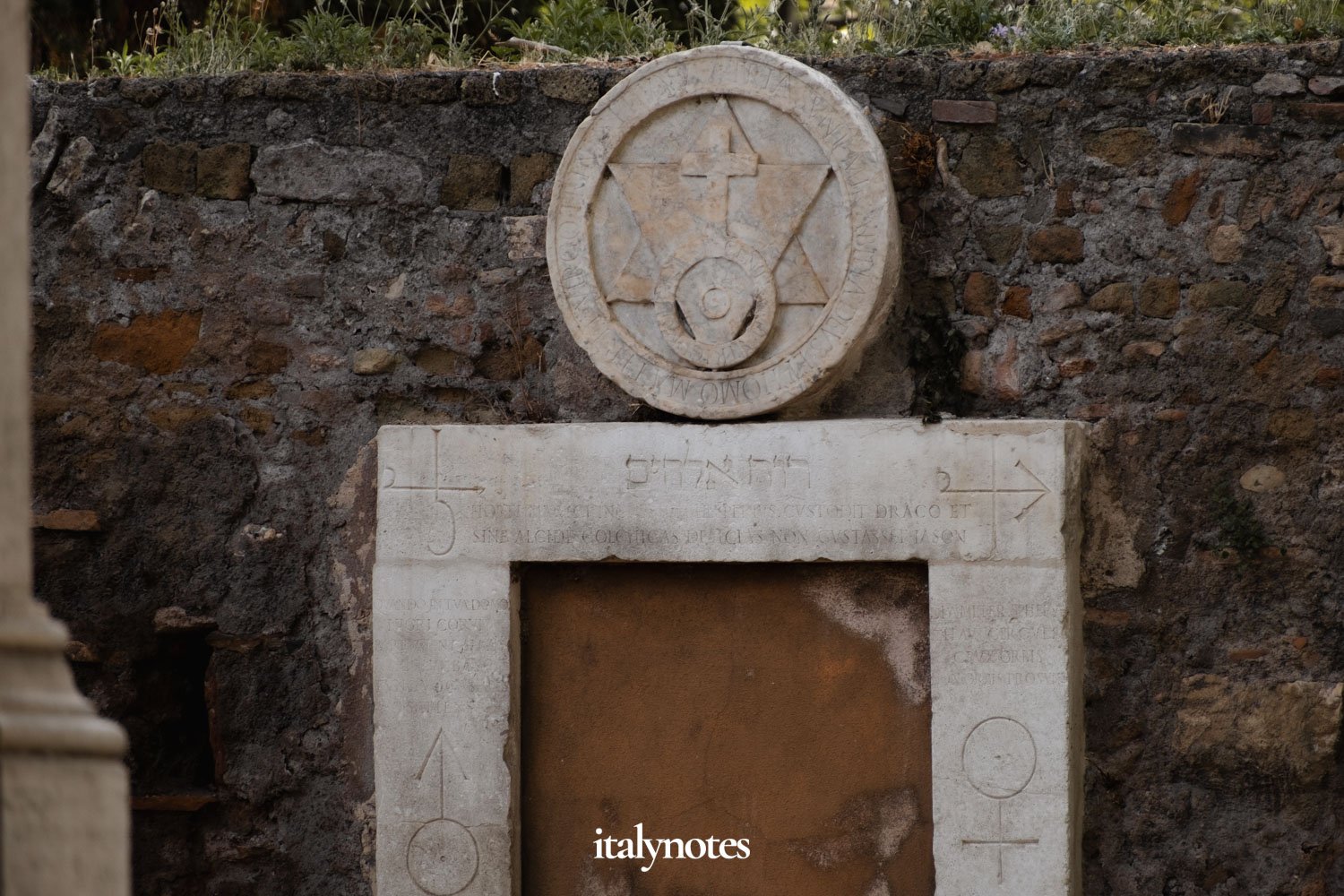Porta Magica: learn how to turn base metals into gold
| Last updated: June 2024 |
Wouldn't it be great if you could turn base metals into gold? Believe it or not, the secret to doing just that can be found in an unexpected place: near Termini station.
I know, this area isn't exactly the prettiest, but it holds a monument with a fascinating story. I'm talking about the Porta Magica, or Magic Gate, tucked away in the corner of Piazza Vittorio Emanuele II (Google Maps).
The Porta Magica dates back to the latter half of the 17th century and was once part of the opulent Villa Palombara, home to Marquis Massimiliano Savelli Palombara.
The Porta Magica sits in the north-west corner of Piazza Vittorio Emanuele II.
Palombara was passionate about alchemy and esotericism. According to legend, one night, the renowned 17th-century alchemist Giuseppe Francesco Borri, disguised as a pilgrim, stayed at Palombara's villa.
Borri claimed he knew the secret to turning base metals into gold and only needed a specific herb to do so. That very night, he wandered through the villa's gardens in search of the elusive herb.
It's believed that Borri succeeded, as he vanished the following day, leaving behind a few flakes of gold — apparent proof of his success. Along with the gold, he left an indecipherable piece of paper filled with magical symbols, supposedly containing the secret to the transformation process. Hoping that someone might one day decode the recipe, Palombara inscribed these symbols onto the five gates of his villa.
The upper part of the Porta Magica bears the Hebrew inscription “RUAH ELOHIM,” which translates to “Divine Spirit.” The symbols on the doorpost represent planets along with their associated gods and metals, including Saturn (lead) and Mars (iron). Each set of symbols is paired with esoteric Latin mottos, such as “He who can burn with water and wash with fire, makes heaven from earth and precious earth from heaven.”
Today, the Porta Magica is the only remnant of Villa Palombara. In the 19th century, the construction of the Esquilino quarter led to the destruction of many villas on the hill, including Villa Palombara. Only one gate from the villa's garden was preserved, likely due to its intriguing nature and the folk legends surrounding it. The gate was relocated to the newly created Piazza Vittorio, adding a picturesque touch to the square and park.
The two statues on either side of the gate were added later. They represent the Egyptian deity Bes, whose cult was widespread in the Roman world. The statues were found in 1888 and placed next to the Porta Magica.
The statues on either side of the Porta Magica represent the Egyptian deity Bes (left). The cult of Bes was widespread in the Roman world. Statues of the demigod are displayed in numerous museums, including the Museo di Scultura Antica Giovanni Barracco (right).
After repeated acts of vandalism, the Porta Magica is now fenced off, allowing only distant views. As you stand at a distance, peeking through the fence, you might wonder why it's kept so inaccessible. Could it be to guard the secret of creating gold? Who knows.. But with a smartphone, you can zoom in and try to decipher the symbols. Are you up for the challenge?









